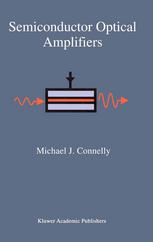

Most ebook files are in PDF format, so you can easily read them using various software such as Foxit Reader or directly on the Google Chrome browser.
Some ebook files are released by publishers in other formats such as .awz, .mobi, .epub, .fb2, etc. You may need to install specific software to read these formats on mobile/PC, such as Calibre.
Please read the tutorial at this link: https://ebookbell.com/faq
We offer FREE conversion to the popular formats you request; however, this may take some time. Therefore, right after payment, please email us, and we will try to provide the service as quickly as possible.
For some exceptional file formats or broken links (if any), please refrain from opening any disputes. Instead, email us first, and we will try to assist within a maximum of 6 hours.
EbookBell Team

5.0
98 reviewsCommunications can be broadly defined as the transfer of information from one point to another. In optical fibre communications, this transfer is achieved by using light as the information carrier. There has been an exponential growth in the deployment and capacity of optical fibre communication technologies and networks over the past twenty-five years. This growth has been made possible by the development of new optoelectronic technologies that can be utilised to exploit the enormous potential bandwidth of optical fibre. Today, systems are operational which operate at aggregate bit rates in excess of 100 Gb/s. Such high capacity systems exploit the optical fibre bandwidth by employing wavelength division multiplexing. Optical technology is the dominant carrier of global information. It is also central to the realisation of future networks that will have the capabilities demanded by society. These capabilities include virtually unlimited bandwidth to carry communication services of almost any kind, and full transparency that allows terminal upgrades in capacity and flexible routing of channels. Many of the advances in optical networks have been made possible by the advent of the optical amplifier.